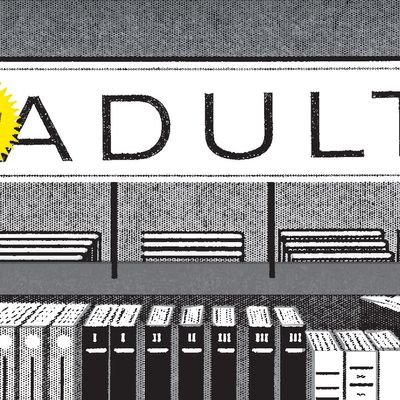
Publishers have invented a new category of commercial fiction. It’s called “new adult,” and judging from the titles thus far categorized in the fledgling genre, it seems intended to appeal to women, especially the young women who in recent years have taken to reading books written for teenagers. According to estimates, these not-so-young adult readers comprise a sizable share of the audiences of Twilight, The Hunger Games, and Harry Potter and are a big reason why those books’ reach extended so far beyond their anticipated demographic. Now the industry is betting that there’s another kind of story that they will buy, featuring all the heartfelt crises of identity that affect adolescent characters, only with real-world settings and slightly more adult insight and adult situations (perhaps even sex!). Union Street, a new-adult series due out from St. Martin’s Press next year, will center on five young women, recent college graduates, living in a Brooklyn brownstone. In the first book, according to the catalogue copy, one of the characters, a girl “with an art-history degree and an unfortunate history of Facebook topless photos,” gets laid off and starts her own food truck, confronting “the surprisingly cutthroat Brooklyn world of hybrid lettuce growers, artisanal yogurt-makers, and homemade butter producers.”
But is this sort of thing really what young women want in their trashy reads? Where the romance novels of Sandra Brown and Danielle Steel once enlivened the evenings of homemakers with stories of torrid encounters and impossible desire, and chick lit confirmed the me-first ethos of the first generation of fully empowered female professionals, maybe today’s twenty- or thirty-something reader is looking for the opposite: a reprieve from romantic and sexual freedom.
They are reading books for children, after all, and there is a way that only a book written for children gets to plausibly maintain certain myths about adult relationships, namely that true love can only lead inevitably, sweetly to marriage—the only impediment being the resolution of a masculine rivalry between two handsome suitors. And to women who are dating longer and marrying later—and meanwhile enduring all the ruthless machinations, preternatural self-sufficiency, and porno literacy that contemporary singledom requires—there may be an idyllic simplicity about the imaginary world of sexual clarity that exists between rounds of blood sport in District 13. It’s not for nothing that The Hunger Games shares a common plot point with Twilight and Harry Potter: Each features main characters marrying their childhood sweethearts. If readers seek out in lowbrow fiction the fantasies missing in their quotidian lives, maybe this fondness for tidy love lives is simply indication of a surfeit of bodice ripping going on elsewhere.
It follows, then, that a book with a 25-year-old Hermione Granger taking a walk of shame to the G train on a Sunday morning might be less appealing to readers in their twenties than publishers are banking on. For new-adult releases, the mixed reaction to J. K. Rowling’s foray into grown-up novels, The Casual Vacancy, may be a harbinger. When defining a successful relationship is as murky in fiction as it is in real life, young women might opt to stick with their children’s books.

